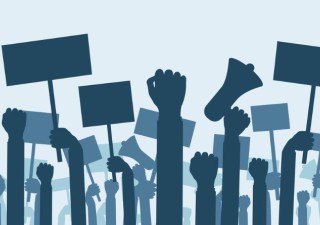INTA: Companies, law firms urged to embrace diversity and inclusion
24 June 2020

Employers were encouraged to embrace diversity and inclusion during the second day of the INTA 2020 New York Conference. Gregory Glass reports.
Employers including both companies and law firms were encouraged to embrace diversity and inclusion during the second day of the International Trademark Association’s 2020 New York Conference.
The topic was particularly timely in the United States, where weeks of protests have roiled cities following the May 25 death of George Floyd, a 46-year-old black man, who was killed by police officers in Minneapolis, Minnesota, during an arrest for allegedly using a counterfeit banknote.
“The issues of anti-racism and police brutality that are primarily affecting the black community [in the United States] are inextricably intertwined with the topic of diversity and inclusion,” said Sanjana Sharma, the Chicago-based associate general counsel for intellectual property and knowledge management at UL, a 125-year old global independent safety science company. “We think these current events really demonstrate that everyone has a role to play with respect to D&I, and it’s really incumbent on all of us, especially the lawyers, to be part of the solution.”

Sharma, who moderated the session called Diversity and Inclusion: How to Live Your Values to the Benefit of Your People and Your Brand, established the following definitions for use in the session:
Diversity refers to the full-range of human differences, and workplace diversity specifically is the understanding, acceptance and value that is placed on differences between coworkers. These differences include race, ethnicity, gender, age, religion, physical ability and others. Inclusion refers to the environment that you create in order to respect these differences.
“So, when we refer to diversity and inclusion, or D&I, we are referring to enterprise-wide initiatives or programs to support diversity, and the inclusion of diversity, in an organization,” Sharma said. “Research shows that being diverse and inclusive leads to more innovative products and services, long-term employee retention and higher financial performance.”
Two of the panelists were from Mattel, Inc., the manufacturer of children’s toys. They used the company’s experience with its best-selling Barbie line as how D&I initiatives can be expressed to consumers by providing those consumers with a diverse line of Barbies.
“I’m proud of what we’ve done over the course of Mattel’s history but especially recently, with respect to expressing diversity and inclusion in our product line,” said Michael Moore, assistant general counsel and senior director, trademarks and copyrights, at Mattel, Inc., in Los Angeles.

“At Mattel, we take D&I and the role [seriously], because Mattel has unique youth-facing brands that educate through play, so that heightens our responsibility to D&I and expressing that, especially, through our brands. There’s much to do to address inequality in society here, and brands have a unique place – trusted brands especially – to influence and create change.”
Moore noted that doing the right thing is good for business. “There is a positive relationship between diversity and performance. Other organizations have found that there’s a real advantage to doing it, so it’s a win-win and brands can really jump in and get involved and increase their role in it.”
Sharma asked Moore if brands could safely sit out being involved in social issues. “There’s a real potential cost to doing that, not only with respect to cost to internal innovation, [but] consumers these days, especially now, really value diversity and are looking for brands that express that. Consumers want to align with brands that reflect their values. You could potentially lose consumers and consumer trust on this,” he said.
Peter Dernbach, a partner at Winkler Partners in Taipei, said that, traditionally, many brands were cautious about taking any fixed or strong position on anything that they felt might be a controversial issue. “It’s almost like the brand wanted to be the person at the party who didn’t offend anybody, so they deliberately did not engage in social issues,” Dernbach said.

“I think consumers expect brands to have values and expect brands to stand for something and then expect you to actually articulate that and act on that. It can be daunting for brands and brand managers to decide how to take appropriate action. I think there’s a lot of fear of getting it wrong, and many times people will get it wrong, but the point is, you have to ground yourself in authentically what are your values,” he said.
“Brands all have these powerful brand stories, and even those of us who work in law firms, all of our firms are made up of diverse groups of people who bring all these stories and experiences and talents together, and if we ground ourselves in our values, then when we face many of these issues, we’re able to be engaged in broader social issues with real authenticity,” Dernbach said.
Dernback notes that many brands have come out with statements in favour of racial equality. “Some are getting a little bit of feedback from consumers saying ‘thank you for the statement, and we’d like to have some more information about how many members of your C-suite are made up of people of colour or other minority groups.’ There is a personal inventory that everyone needs to do, because this isn’t something that you just want to have a slogan or a marketing message, but it is something that brands are expected to have values and then to act on and articulate those values.
Kim Culmone, senior vice president and global head of design for Barbie and fashion dolls at Mattel, Inc. in Los Angeles, noted that “doing the right thing” socially can lead to greater financial success for a brand.

“We understand how intimately we enter someone’s life at such a formative time,” Culmone said. “The Barbie brand’s core age group is three to six. We recognize we have a platform with 99 percent awareness in the world to really do good with the choices that we make, and how we design and market our product, and then more importantly, what we enable. We stand on a foundation of power and influence.”
Culmone said that D&I at Mattel goes beyond just shifting what the doll looks like and what the company says about it to include deeper examinations of the content the company develops to accompany Barbie, and “looking across the entire ecosystem of the Barbie brand” for ways the company can be of service to consumer and to the world “by changing what we do and what we create, and getting to a place where we can establish programs that help girls believe that their gender can be and do anything. As early as five years old, girls start to doubt the brilliance of their own gender in comparison to boys. How can we participate in dismantling the systems that create that inequity?”
Culmone says consumers have tremendous power in shaping social change – and that they should not be afraid to use it. “Consumers can vote with their dollars. If you see a company that’s doing the right thing and is leading into this space, spending your money on items that are from companies that represent your values is the best way to get more of this into the world.”






